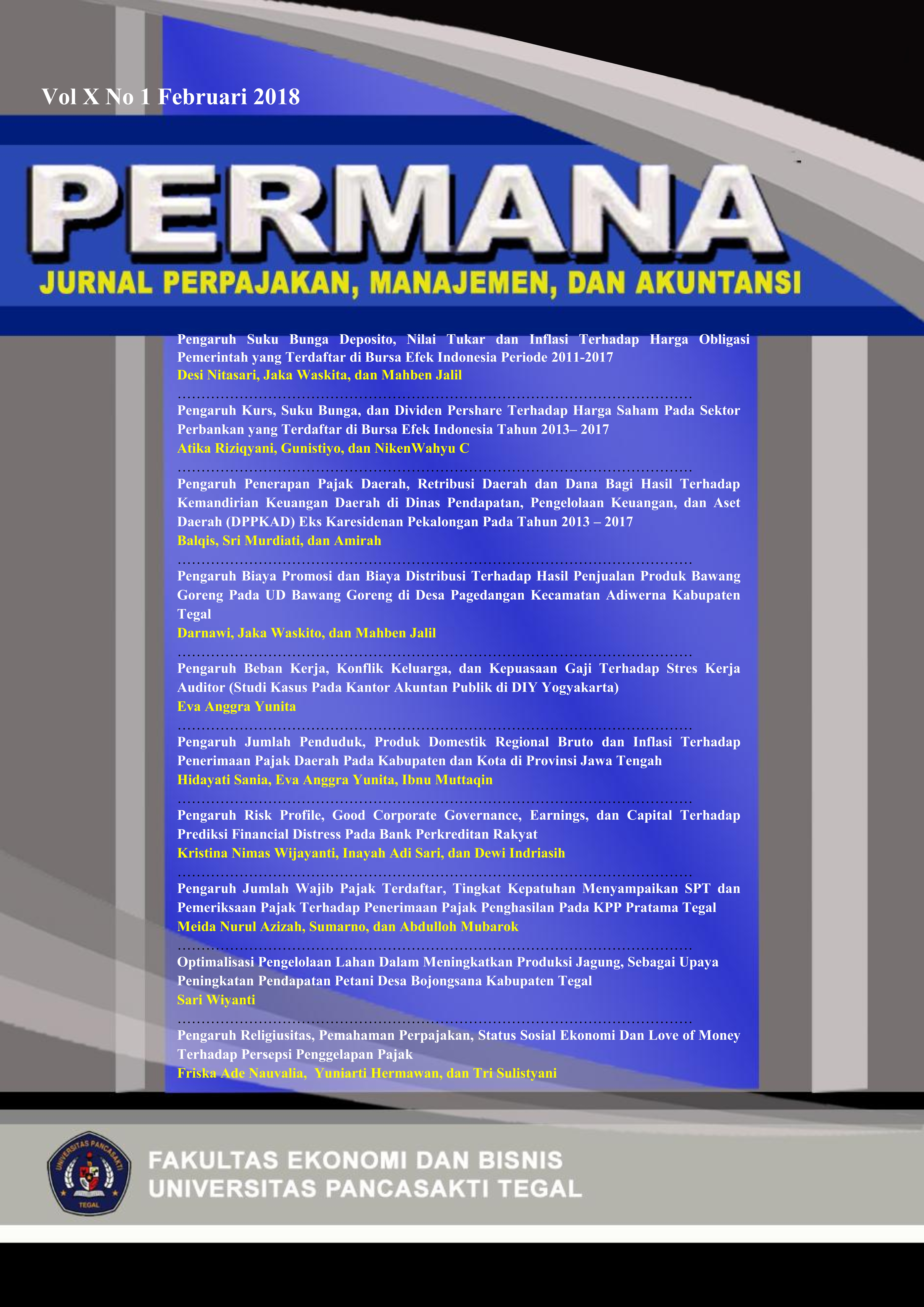Optimalisasi Pengelolaan Lahan dalam Meningkatkan Produksi Jagung, Sebagai Upaya Peningkatan Pendapatan Petani Desa Bojongsana Kabupaten Tegal
Main Article Content
Abstract
The study was conducted in Bojongsana village, Suradadi Subdistrict, Tegal Regency from April to August 2018 to optimize land in increasing corn production, as an effort to increase the income of farmers in Bojongsana village, Tegal Regency. The population in this study were corn growers. The data used in this study are primary data obtained through direct interviews with respondents. While secondary data was obtained from the office of the Bojongsana Village Chief and the Suradadi Agriculture Service Office in Tegal Regency. Sampling using Purposive sampling, namely samples are farmers who have the ability and experience in planting corn according to the purpose of this study. Data and information collected then processed and discussed qualitatively descriptive. The results show that by optimizing the land after the rice harvest, which is utilized for corn production with the strategy of the SWOT analysis can increase farmers' income. To meet market demand for corn, there needs to be a sustainable development of corn production in Bojongsana village, Suradadi District, Tegal Regency.
Article Details
Licensed under  a Creative Commons Attribution-NonCommercial 4.0 International License
a Creative Commons Attribution-NonCommercial 4.0 International License
References
Baiq, T. R.E & Awaludin, H. (2015),“Pengaruh Jarak Tanam terhadap Pertumbuhan dan Hasil beberapa Varietas Jagung Hibrida di Kawaasn Pengembangan Jagung Sumbawa”, Balai Pengkajian teknologi Pertanian Nusa Tenggara Barat
Elizabeth, R.(2007), “Role and opportunity of corn and livestock Integration in Affecting Cognitive Intellegent of Poor Farmer in Marginal Land”, Seminar Nasional Teknologi Peternakan dan Veteriner 2007
J. David Hunger & Thomas L Wheelen (2003), Manajemen Strategis, Penerbit Andi Yogyakarta
Nano, P. (2010), Pengembangan Potensi Unggulan Sektor Pertanian, Jurnal Ekonomi dan Studi Pembangunan, Volume 11, Nomor 1, April 2010
Paudel, B., et al. “Yield and Economics of Maize (Zea mays)+ Soybean (Glycin max L. Merril) Intercropping System under Different Tillage Methods”, World Journal Agriculture Research 3.2 (2015): 74-77
Buchari, A.(2010), Pengantar Bisnis, ALFABETA, Bandung
Pusat pelatihan pertanian, Badan penyuluhan dan pengembangan SDM pertanian, 2015
Reckleben, Y. (2011), Cultivation of maize – which sowing row distance is needed
Freddy, R. (2014), Analisis SWOT – Teknik Membedah Kasus Bisnis, Gramedia Pustaka Utama
Rhenald, K. (2008), Riset Kualitatif, Penerbit Bentang
Sadono, S. (2013),Teori Pengantar Ekonomi Mikro, Edisi 3 Pt. RajaGrafindo Persada
T.T.Liu, B.G.McConkey, et.al. (2011), Strength, Weaknessness, Opportnities and Threaths Analysis of Bioenergy Production on Marginal Land, Energy Procedia 5 (2100) 2378-2386 Published by Elsevier Ltd. Doi : 10.1016 / j.egypro. 2011.03.409
Tika B, K., Jiban S. & Buddhi B, A,(2015), Status and prospects of maize research ini Nepal, journal of Maize Research and Development (2015) 1 (1):1-9 DOI:10.5281/zenodo 34284
Twenty L, M. & Zulfikar, “Potential of Corn Development in Suboptimal Land of Central Kalimantan” Balai Pengkajian Teknologi Pertanian Kalimantan Tengah
Yulmar, J.(2015), “Production System and Potential Development of corn in West Pasaman Districts”, Peneliti Bidang Bappeda Provinsi Sumatera Barat, Jurnal Bina Praja/Volume 7 no 3 Edisi September 2015 : 271 – 278

